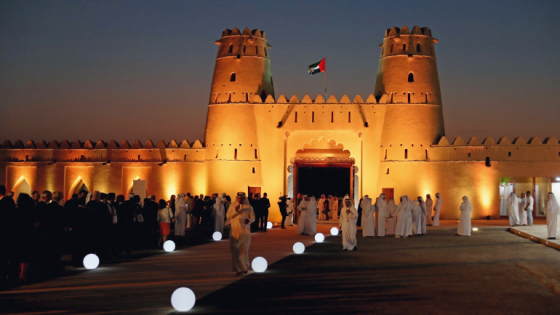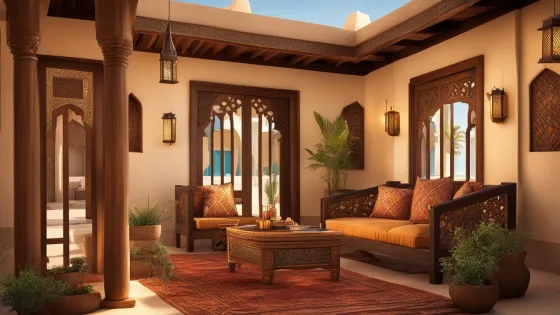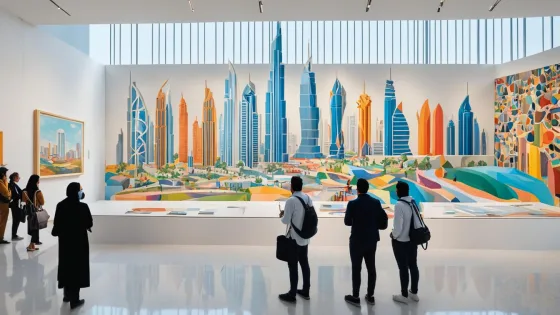Contents
UAE geological heritage sites are a major draw, for those interested in the UAE’s glorious history. The United Nations Educational, Scientific, and Cultural Organization (UNESCO) established World Heritage sites to identify cultural and historical sites. Protected zones have been established. The following are the officially recognized UN world heritage sites in the UAE, as well as those on UNESCO’s tentative site list in the UAE and Oman.
UAE Geological Heritage Sites
This magnificent land has a glorious history that predates the discovery of oil and rapid urbanization. There are also historical sites in the UAE that have withstood the test of time and preserved their glorious past and culture. The term Arab united emirates conjures up a wide range of great images in our minds. The reflections that came before thriving villages, cloud-touching homes, sprawling beaches, and oil opulence. However, the Emirati nation, which is not as well-known for its materialistic wonders, has another vision for geological heritage conservation.
Read more: UAE desert
Al Ain Oasis
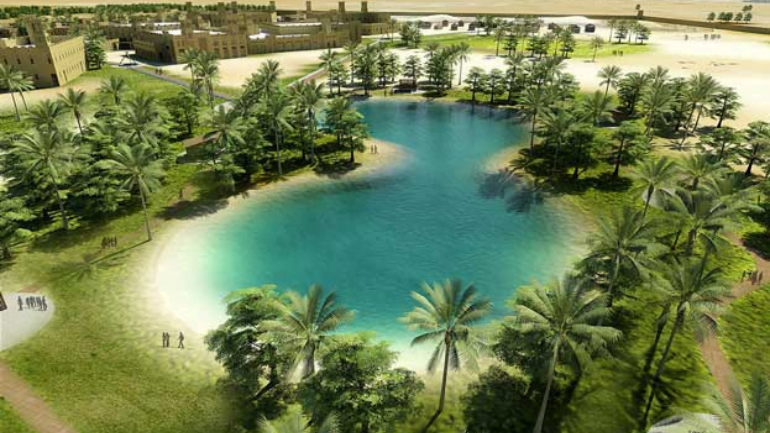
The Al-Ain Oasis is nothing short of a cosmic marvel. As you walk into this lush date grove, you may sound as if you have trekked into the heart of a tropical forest. The majestic palm trees and their prodigious interwoven branches weave enchanting domes.
The oasis covers over 3,000 acres and feeds over 147,000 date palm trees. According to several UAE legends, Sheikh Zayed Bin Sultan Al-Nahyan, the UAE’s founder, was born in this oasis beneath the shade of those majestic palm trees.
The Al Ain Oasis, located in the middle of the Rub Al Khali desert, is a 4,000-year-old village and a UNESCO World Heritage Site. It is the country’s largest oasis, covering 1,200 hectares, and is one of many in Al Ain recognized by the international union of geological sites of world heritage, food, and Agricultural Organization for its ecosystems and cultural sites heritage value in UNESCO world heritage list.
Take a look at: UAE challenges
Khor Dubai
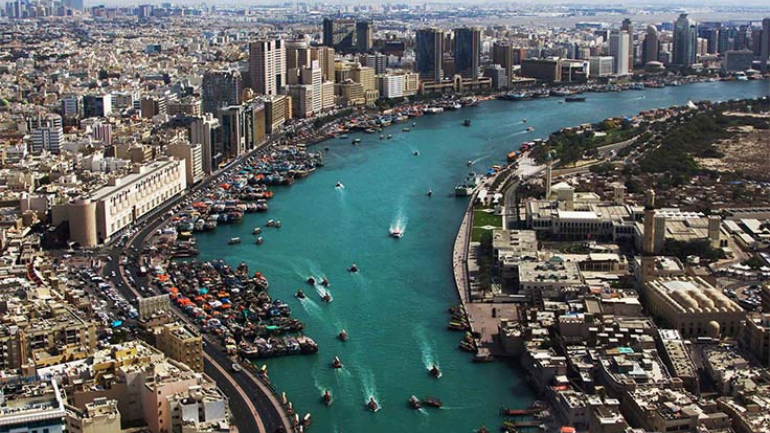
Another rich geological heritage site of interest in the UAE is Khor Dubai or Dubai Creek. This natural seawater inlet separates the town of Bur Dubai and Deira from the Arabian Sea, which overlooks Al Beidha Bay, has been nurtured by multiple cultures including Obeid, the Bronze Age, Stone Age, Iron Age, and Pre-Islamic times.
The Al Bidya Mosque, founded in 1446 and still serving as a spiritual center today, is the UAE’s oldest place of worship. Khor Dubai is one of the UAE’s provisional UNESCO World Heritage Sites. Deira and Bur Dubai are separated by the Arabian Gulf’s natural ocean water inlet, which stretches for 14 kilometers.
The Khor Dubai divides Dubai into two sections, Deira and Bur Dubai, and is vital to the region’s economy. Khor Dubai and its surrounding communities are well-known for their cultural and commercial significance. The Sabkha of Abu Dhabi, a glorious salt flat, cradles many tiny shoals, beaches, streams, secure lagoons, and sediments, an inner region of intertidal flats.
Read more: UAE air pollution
Hili Archaeological Park
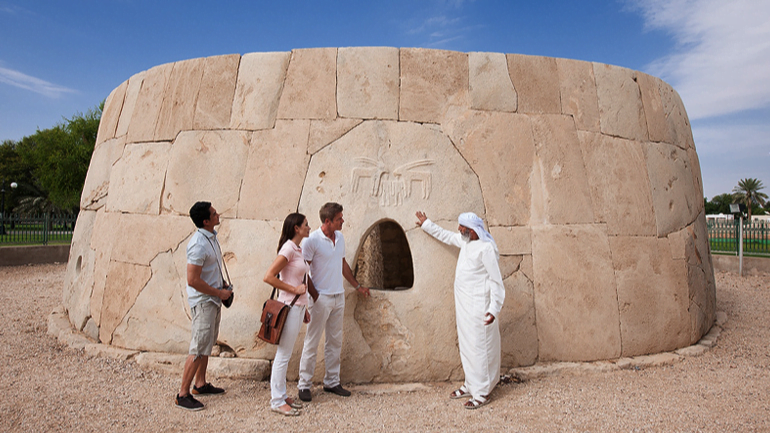
The Hili Archaeological and conducted geological Park is a UAE heritage site in the form of a sprawling archaeological site, located just 15 kilometers outside of Al Ain. The Hili Archaeological Garden combines a public garden and an archaeological site. The history of this location can be traced back to the Bronze Age, which lasted from 2500 BCE to 2000 BCE, by geological survey.
The tomb has two entrances with engravings of humans and animals. The Hili Archaeological Park exhibits evidence of agricultural activity in the UAE 5,000 years ago, as well as notable ancient settlements in the region. Hili Archaeological Park, a UNESCO World Heritage Site in the UAE, is a family-friendly destination with trees, waterfalls, and a small children’s play area.
The archaeological site includes ancient cities, tombs, an artificial water channel Falaj that dates back to the Iron Age, and many other features. The Great Tomb, a 12-meter-diameter tower within the site, is thought to be the Umm al-Nar graveyard.
Take a look at: Business Networking in UAE
The Jebel Hafeet Tombs
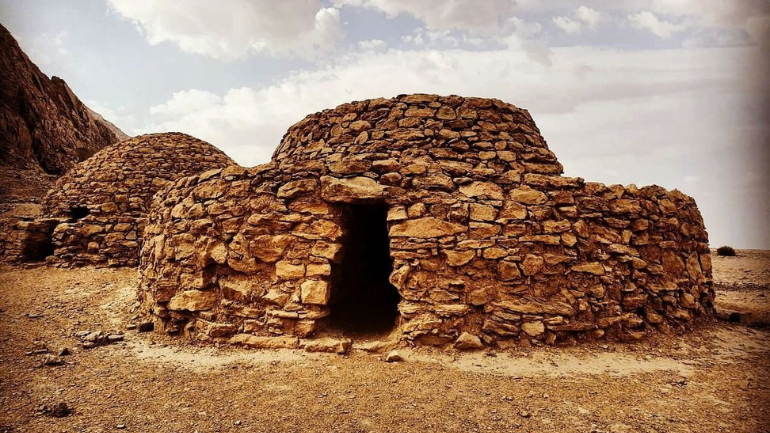
Because the remains of the Emirati Bronze Age are all preserved, the Jebel Hafeet Tombs are nearly identical to the Hili Archaeological Park. The site could be seen at the bottom of Jebel Hafeet Peak, retaining a 5000-year-old past. The tombs of Jebel Hafeet mark the beginning of the Bronze Age in the city, and decorative vessels and copper objects excavated from the region indicate the presence of a prosperous civilization. The Jebel Hafeet Tombs mark the beginning of the Bronze Age in the UAE, which featured their beehive shape. Although the site is closed, the canyons of Jebel Hafeet Mountain can be seen.
Several more geological sites in the UAE are vying for world heritage status. Any of the famous heritage sites to come are The Umm an-Nar Island settlement and cemetery near Abu Dhabi, which is a testament to the Emirati’s foresight in establishing a Bronze Age civilization. Sir Bu Nair Island, as the name suggests, is a Neoproterozoic salt formation island.
The Gate of the Trucial States
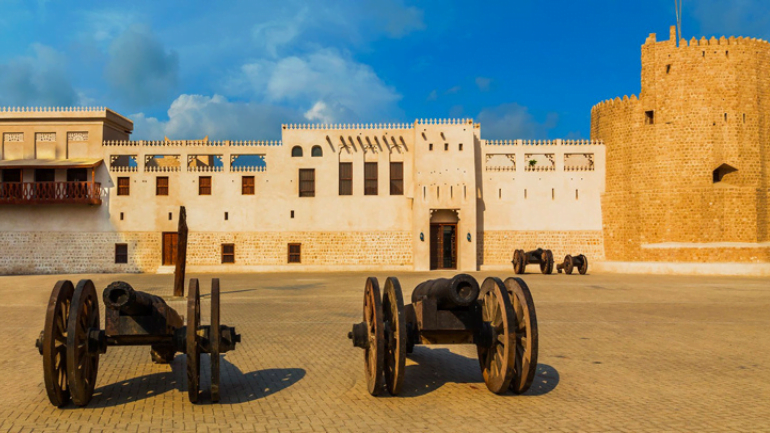
The Gate to the Trucial States is also a gateway to ancient times in Sharjah. This precise location, known as the heart of Sharjah, dates back to 125,000 years ago when Homo Sapiens began to migrate through Africa to the Eastern Mediterranean. Sharjah’s emirate was the gateway to the Trucial States, but it also played a significant role in the region’s pearl trade. The Sharjah government has made significant efforts to preserve the region’s historic structures.
It includes the former port and the houses that are now part of the Mahratta Museum, which is housed in the old air station. In contrast, the Emirate has a strong Antiquities and Heritage Act that protects ancient areas, which adds to its appeal as a potential UNESCO World Heritage Site.
Sharjah is mentioned by ancient writers and travelers, such as the 11th-century geographer Al Edrissy. It was the gateway to the Trucial States and a vital hub for the pearl trade. The town is an example of new urban growth in historical towns.
Read more: Dubai budget travel tips
What is the tangible heritage of the UAE?
There are several Bronze Age forts and settlements within and just outside Hili Archaeological Park, in addition to tombs, One of these, Hili 8, discovered evidence for the UAE’s earliest agriculture, dating back around 5,000 years. The Al Ain Museum houses artifacts from these locations.
What are the UNESCO heritage sites in Abu Dhabi?
There is a UNESCO list of heritage sites in Abu Dhabi Culture includes:
• HILI SITES.
• BIDA BINT SAUD.
• HAFIT TOMBS.
• AL AIN OASIS.
• AL-TAGHROODA.
• AL-AYYALA.
• FALCONRY.
How many UNESCO world heritage sites are in the UAE?
The geography of Heritage in the UAE showcase extraordinarily rich geological heritage. There are Top 5 World Heritage Sites in the UAE are as follows:
1. Al Ain Oasis.
2. Khor Dubai.
3. Hili Archaeological Park.
4. Jebel Hafeet Tombs.
5. Gate of the Trucial States.
Are there any UNESCO sites in UAE?
Al Ain Oasis, located in the middle of the Rub Al Khali desert, is a 4,000-year-old settlement and a UNESCO World Heritage Site. It is the largest oasis in the region, covering 1,200 hectares, it is supported by the UNESCO Conservation of geological heritage and Union of geological sciences in Oman and UAE.
UAE Geological Heritage Sites, like the rest of the Arab world, has seen the evolution of human civilization over several thousand years. The United Arab Emirates (UAE) is a parched desert with some unusual geological features, archaeological sites, and ancient architectural masterpieces. These seemingly uninhabited areas of the globe conceal a number of mysteries. Exploring the aforementioned world heritage in the UAE sites and historical sites will provide visitors with an incredible opportunity to distinguish and appreciate the unique and very special geological sites of world heritage, and cultural grandeur of a country that has been through many trials.
